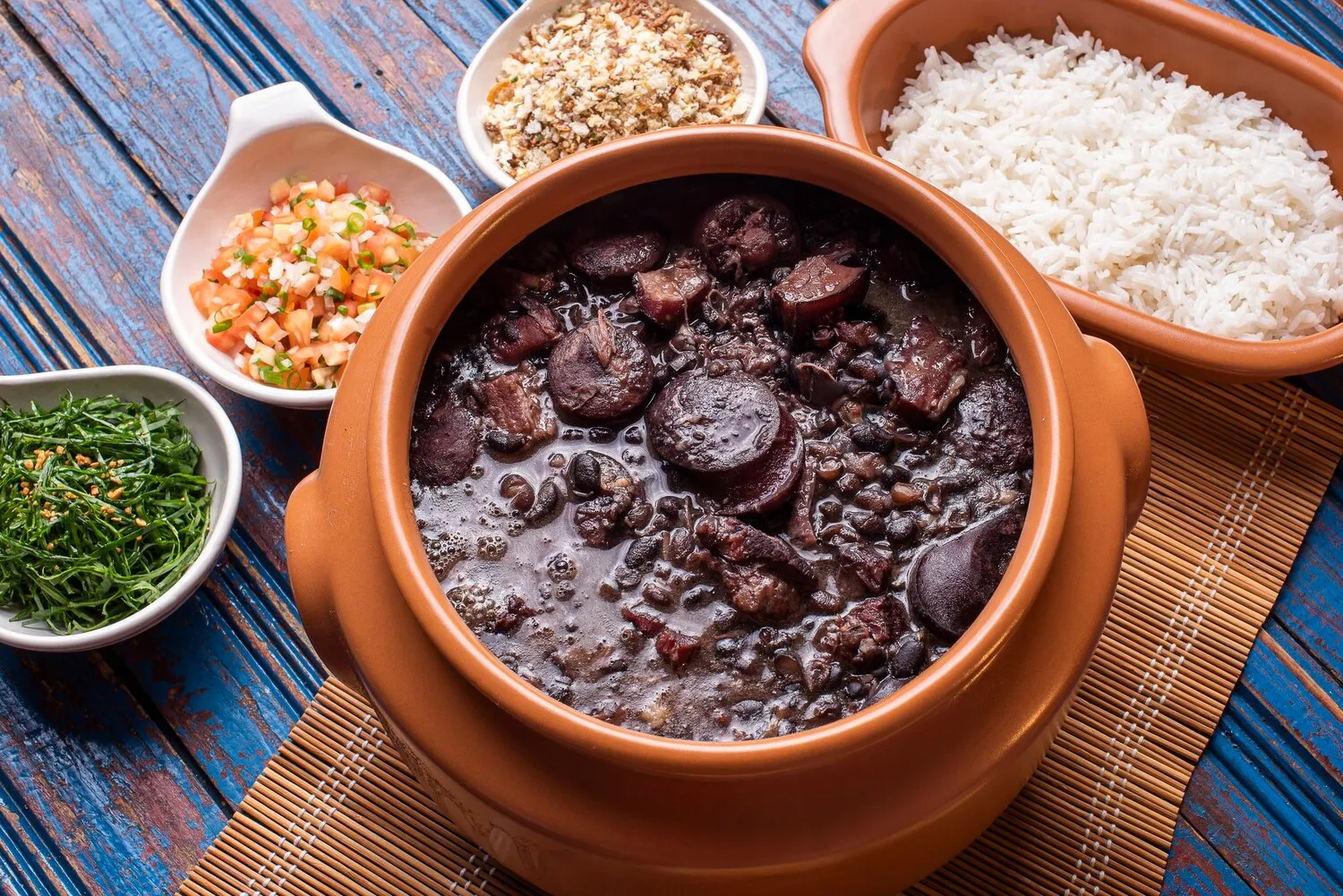
Feijoada
A hearty black bean stew with various cuts of pork and beef, a national dish of Brazil.
Nutrition Facts
* The % Daily Value (DV) tells you how much a nutrient in a serving of food contributes to a daily diet. 2,000 calories a day is used for general nutrition advice.
T-Max
Feijoada's origins are debated, with some claiming it originated with enslaved Africans in Brazil who used discarded pork parts. Others believe it evolved from European stews, particularly those with beans and meat, adapted to utilize local ingredients. Regardless, it reflects Brazil's diverse cultural influences.
Feijoada is considered Brazil's national dish and is deeply ingrained in Brazilian culture. It's more than just food; it's a symbol of unity, celebration, and shared meals.
Social Gathering
Feijoada is typically enjoyed on weekends, particularly Saturdays, as a leisurely and communal meal. It's an occasion for friends and family to gather, socialize, and enjoy a hearty feast together.
Regional Variations
While the basic recipe remains consistent, regional variations exist across Brazil. Some regions might include different types of meats or vegetables, reflecting local culinary traditions.
Accompanying Dishes
Feijoada is traditionally served with an array of side dishes, including white rice, collard greens (couve), farofa (toasted cassava flour), and orange slices. These accompaniments complement the stew and provide textural and flavor contrasts.
Feijoada is a rich, savory, and smoky stew with a complex flavor profile derived from black beans, various cuts of pork and beef, and spices.
The dominant flavor comes from the combination of black beans, which provide an earthy and creamy base. The pork, often including smoked sausages (linguica and paio), bacon, and salted pork belly (barriga), contributes a savory, smoky, and salty depth. Beef, such as dried beef (carne seca), adds another layer of umami. Aromatics like garlic, onions, and bay leaves infuse the stew with additional complexity. Orange slices, often served alongside, offer a bright citrus contrast to the richness.
Soaking the Beans
Soak the black beans overnight before cooking to reduce cooking time and improve digestibility.
Desalting the Meats
Salted meats, such as carne seca and salted pork belly, should be soaked in water for several hours (changing the water frequently) to remove excess salt.
Low and Slow Cooking
Simmer the feijoada over low heat for several hours to allow the flavors to meld and the meats to become tender. The longer it simmers, the better it tastes.
Use Quality Ingredients
The quality of the ingredients, especially the meats, will significantly impact the final flavor. Choose high-quality sausages and pork cuts for the best results.
Explore additional Brazilian dishes and restaurants
Explore BrazilianDiscover top dining spots and culinary experiences in Pouso Alegre.
Explore Pouso AlegreLearn more about the food culture, restaurant scene, and culinary heritage of Brazil.
Explore Brazil